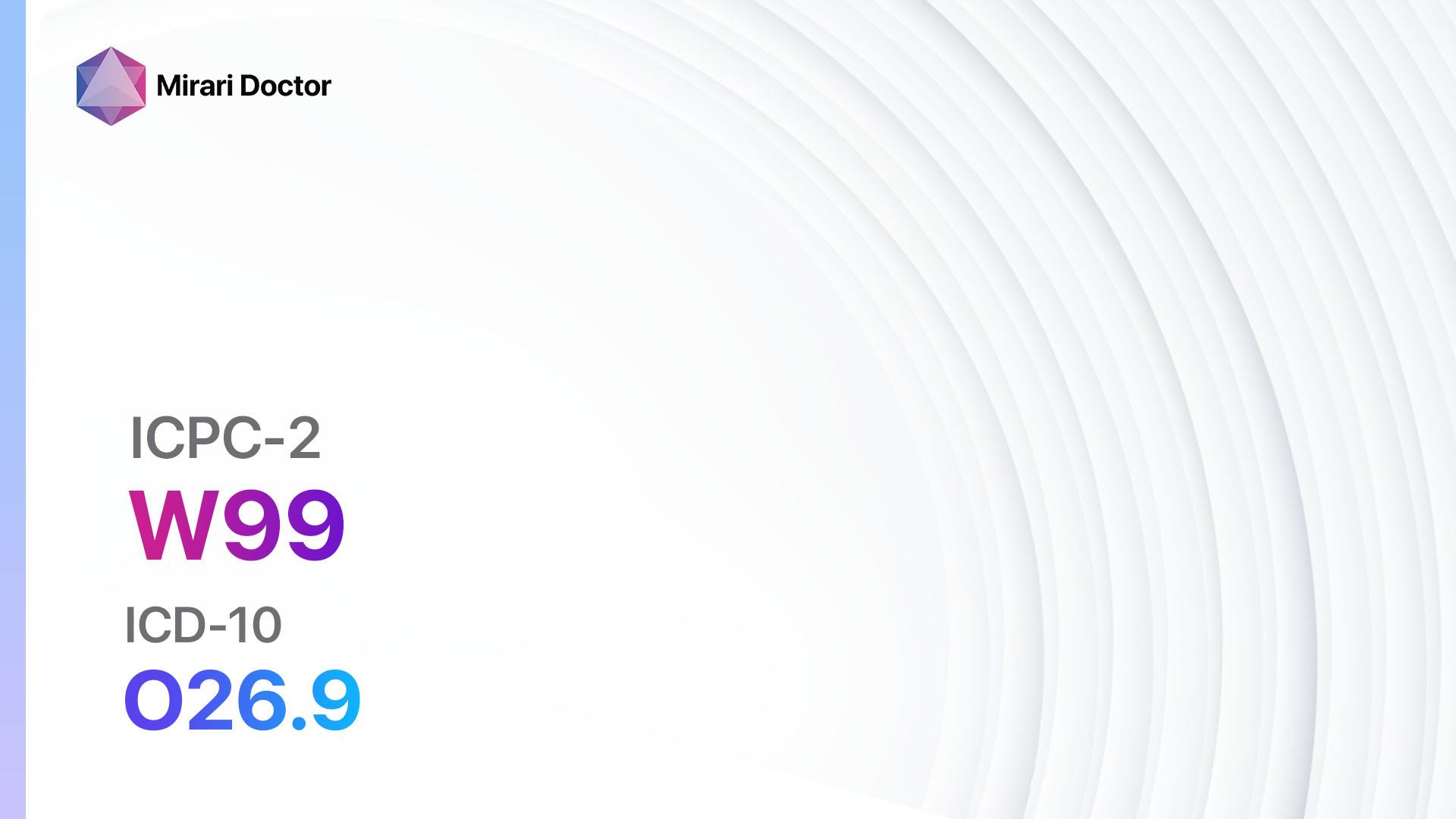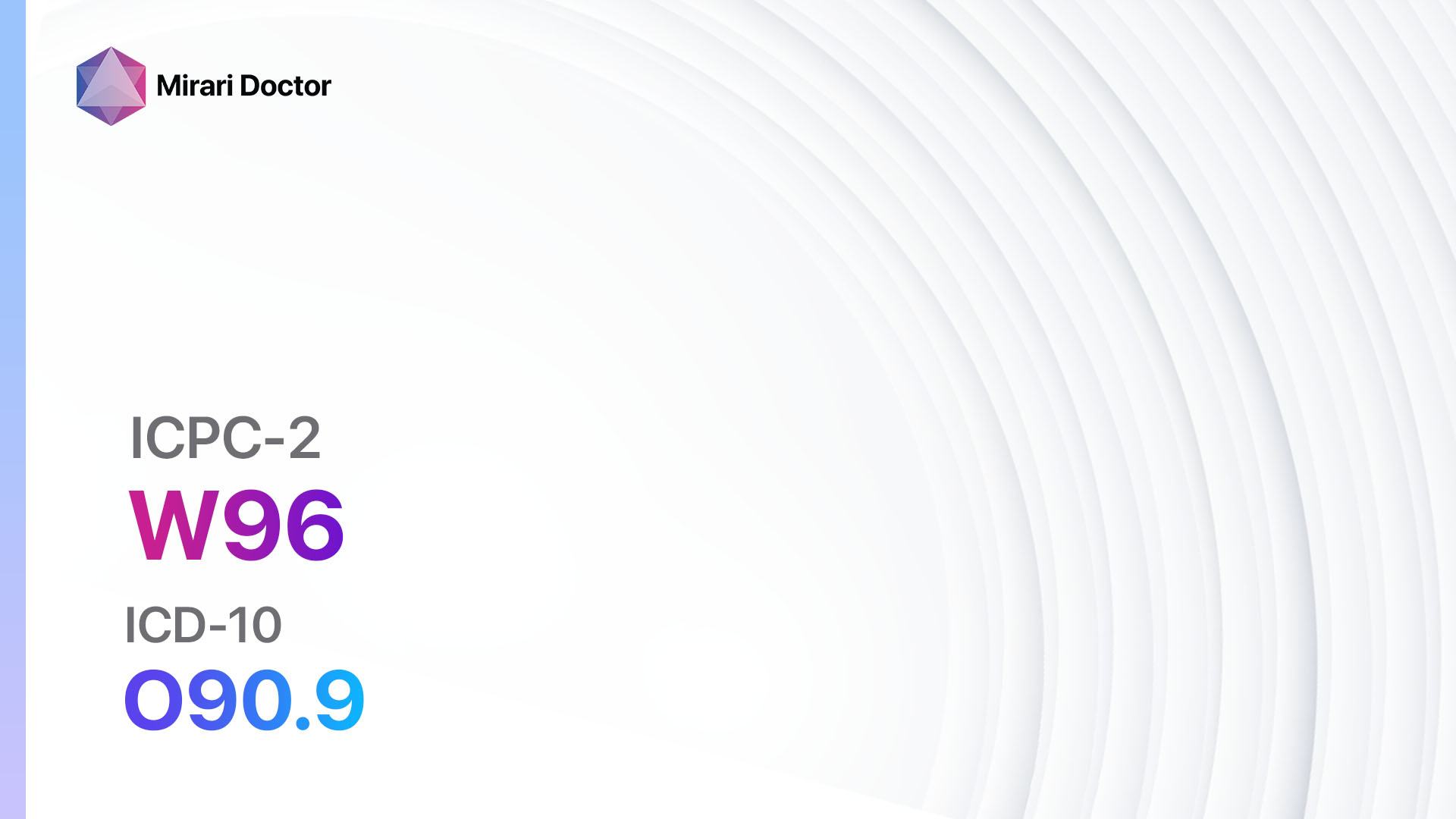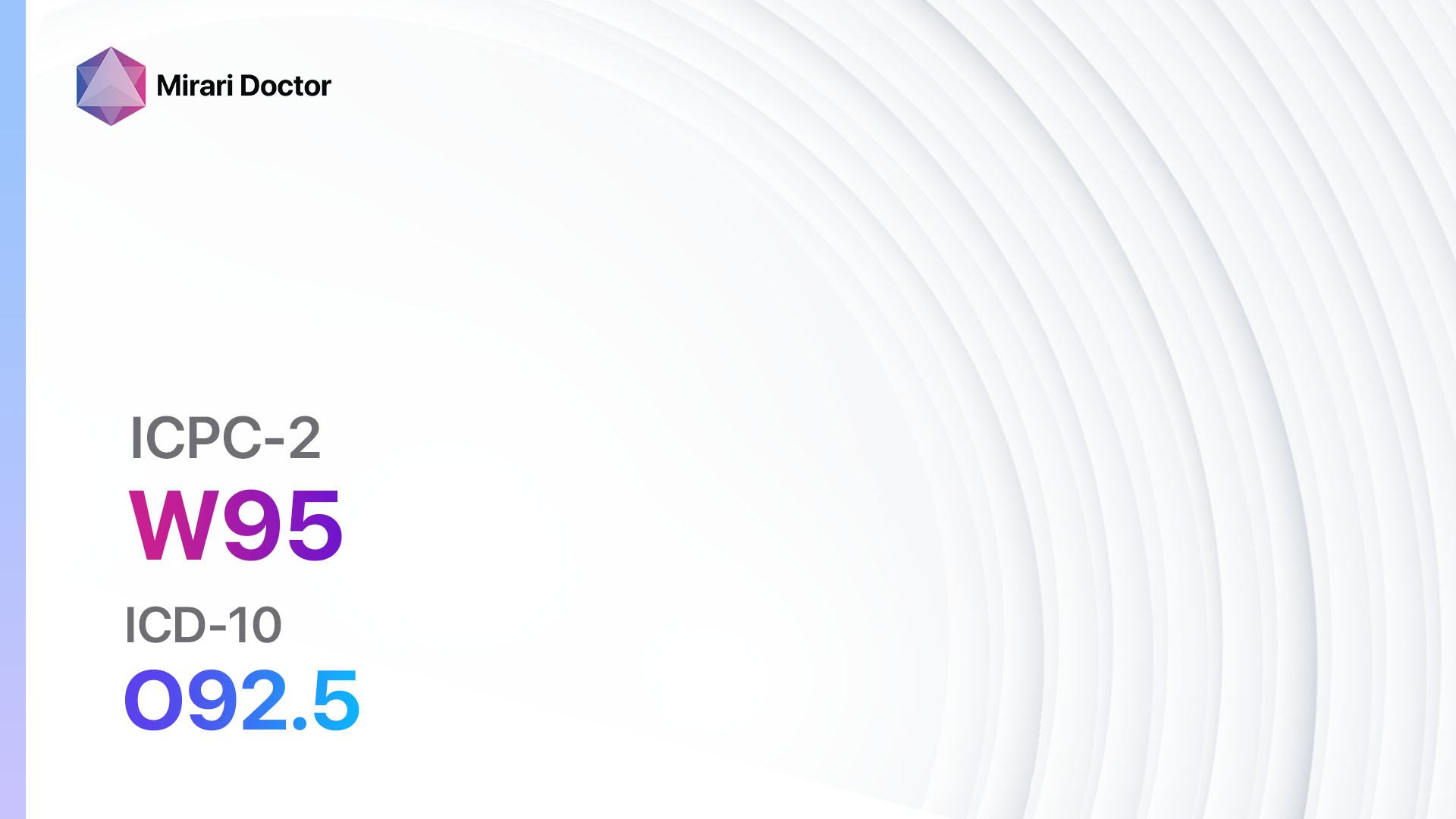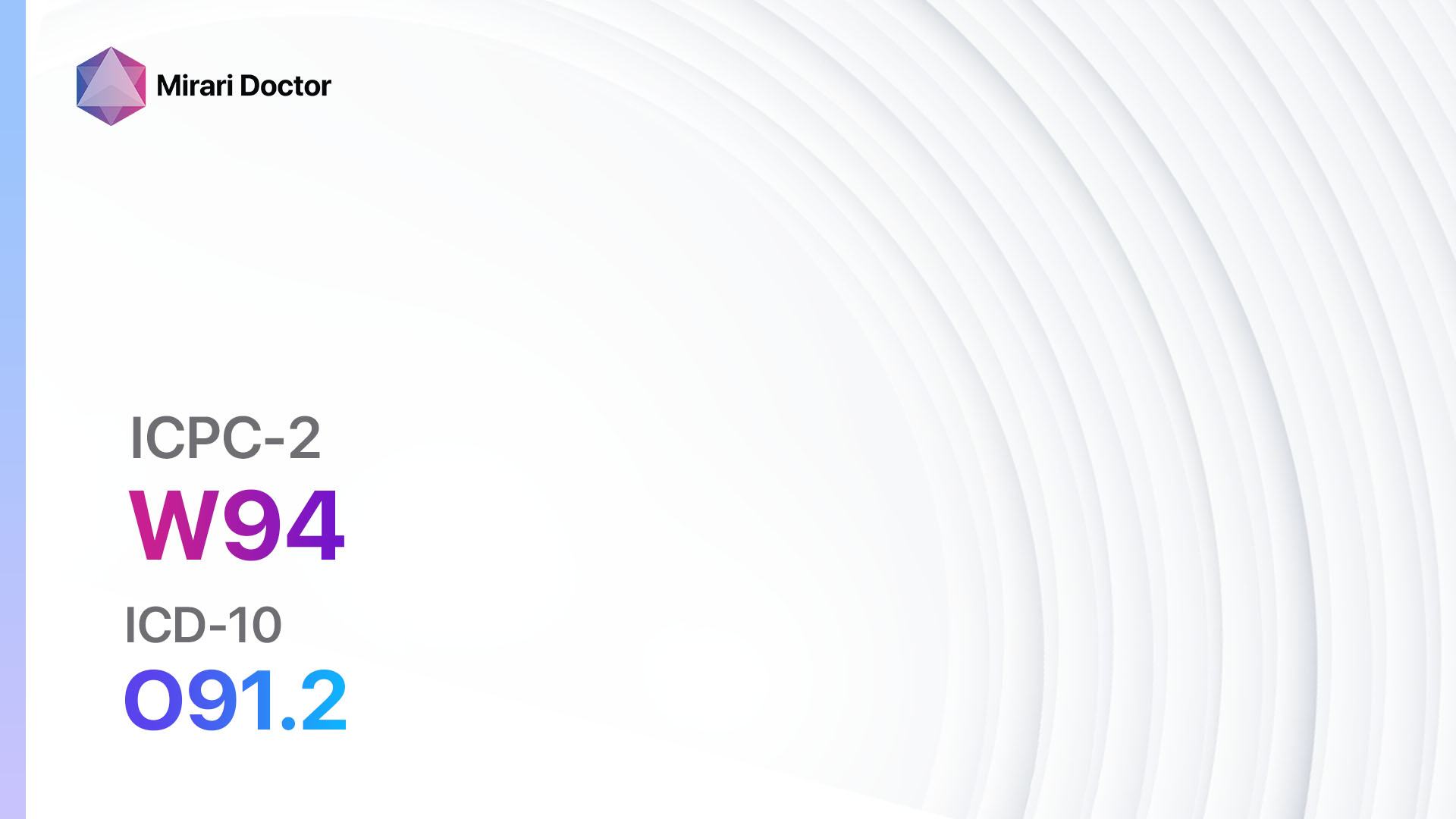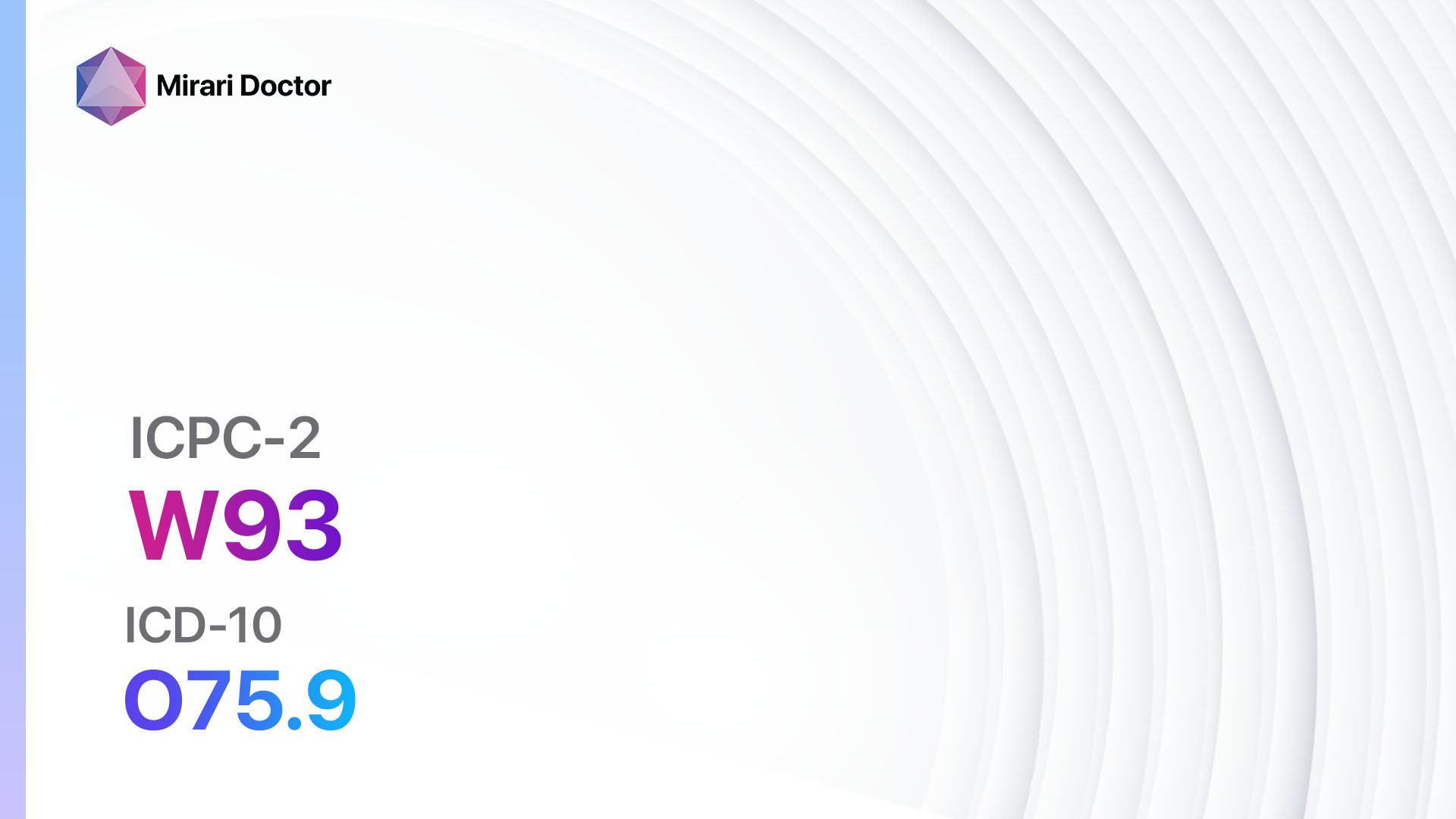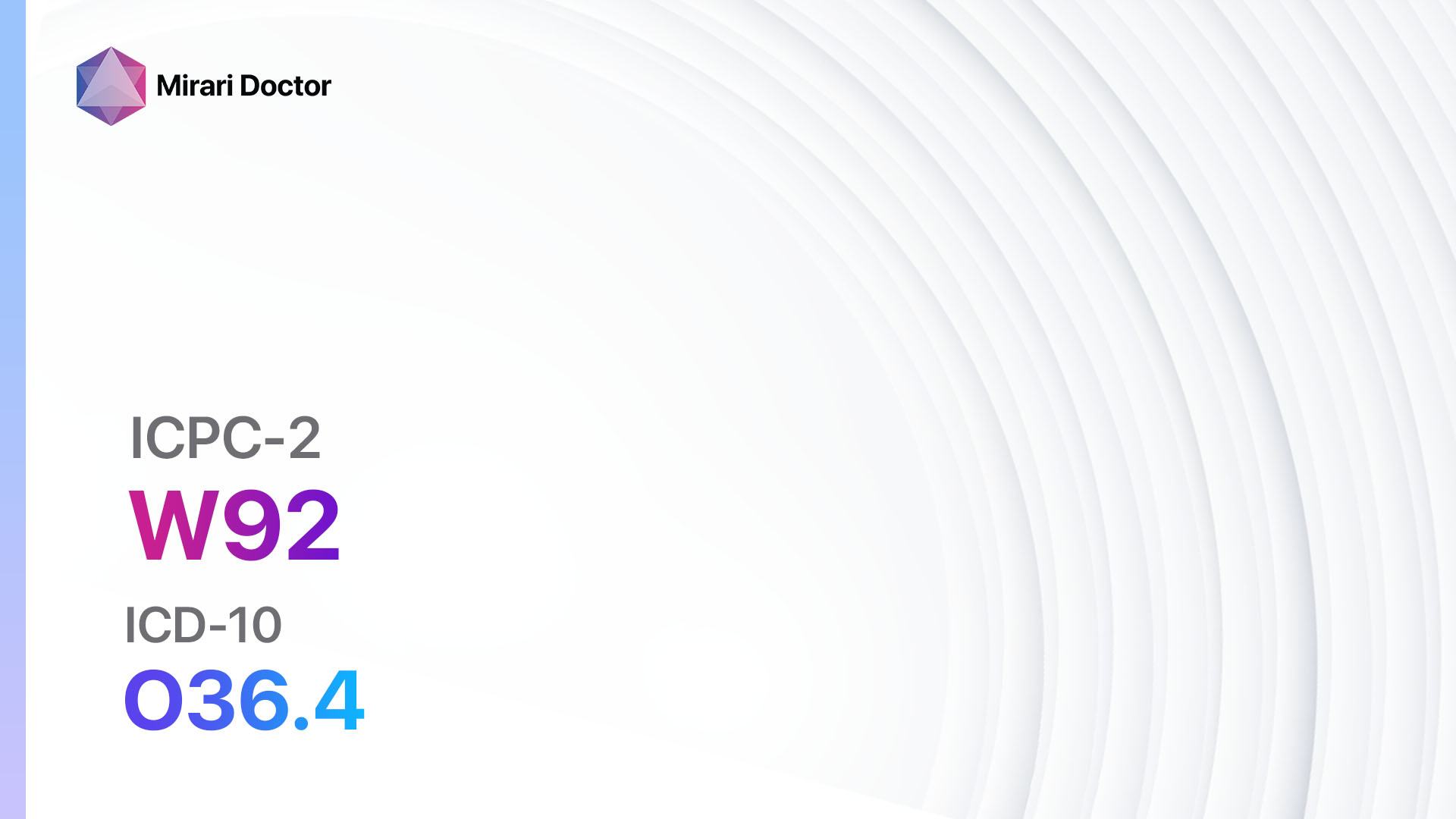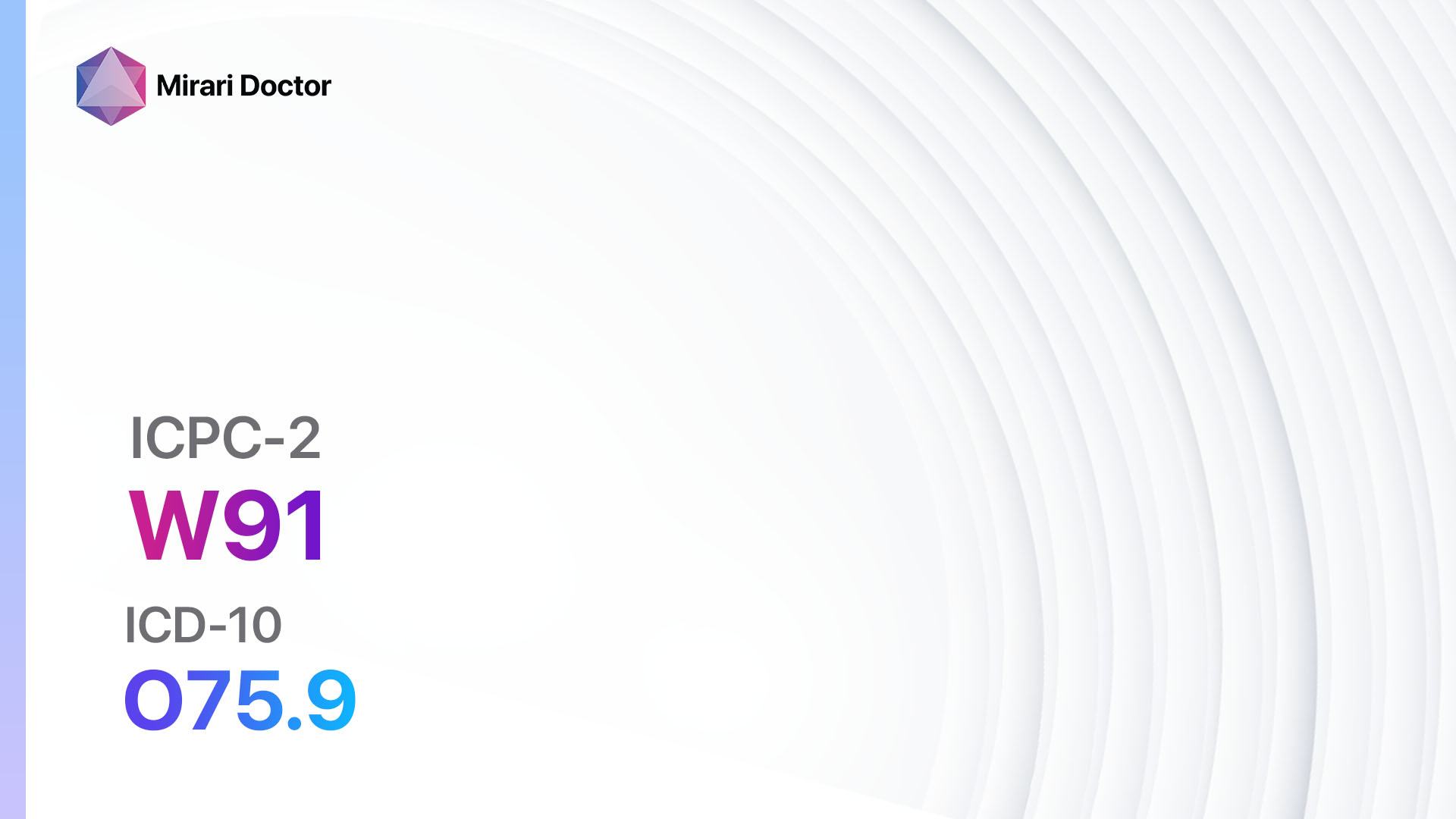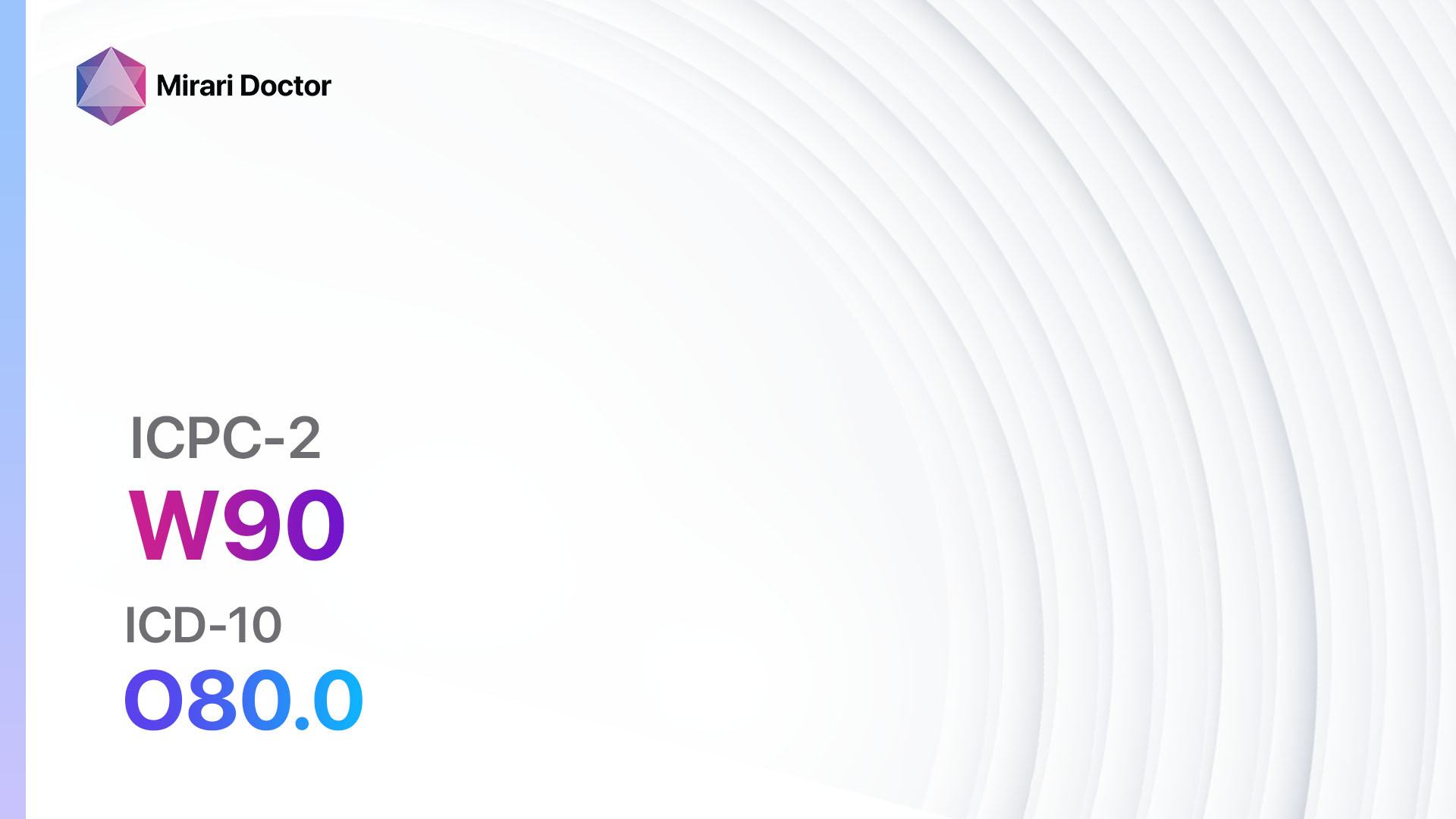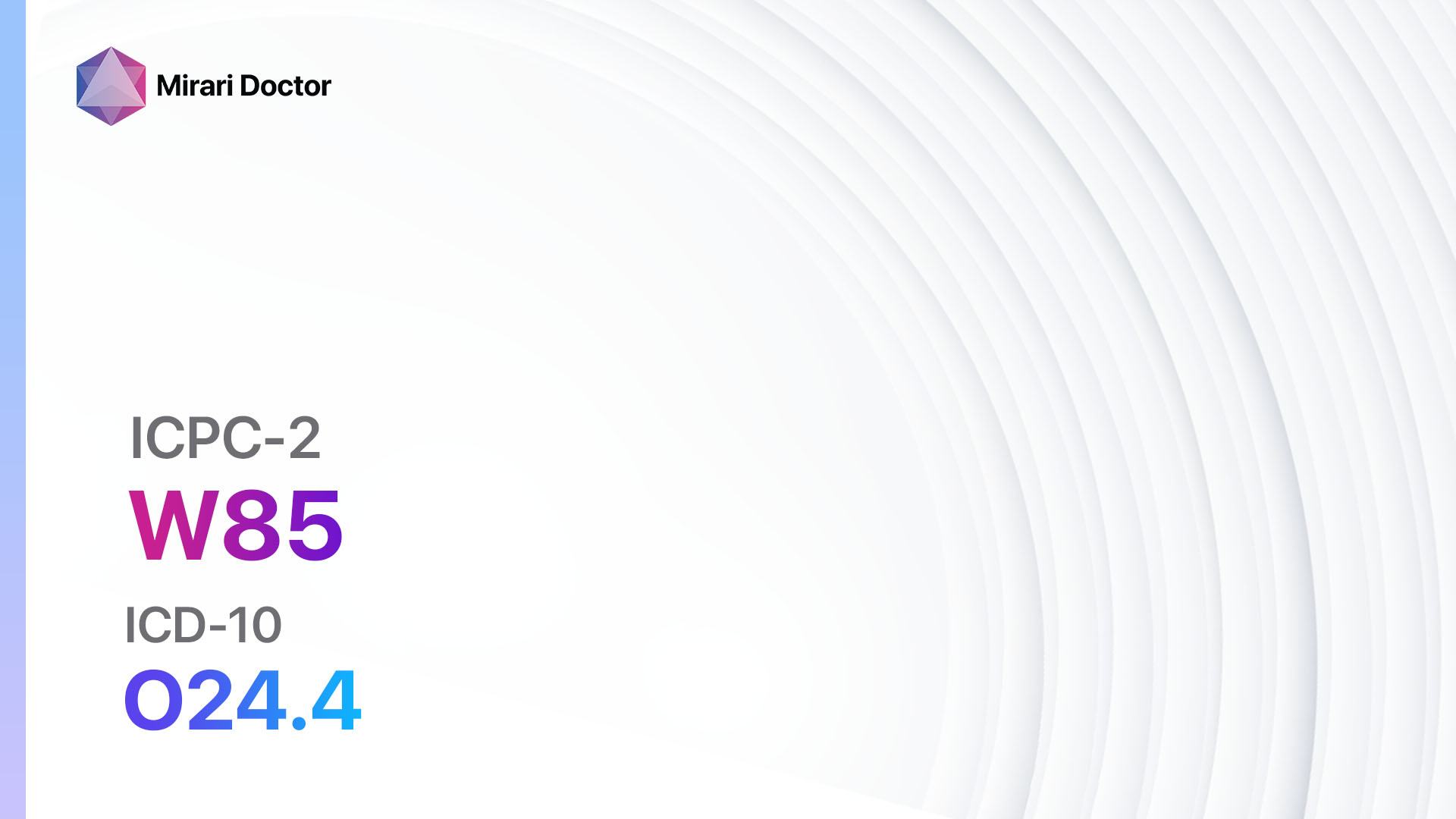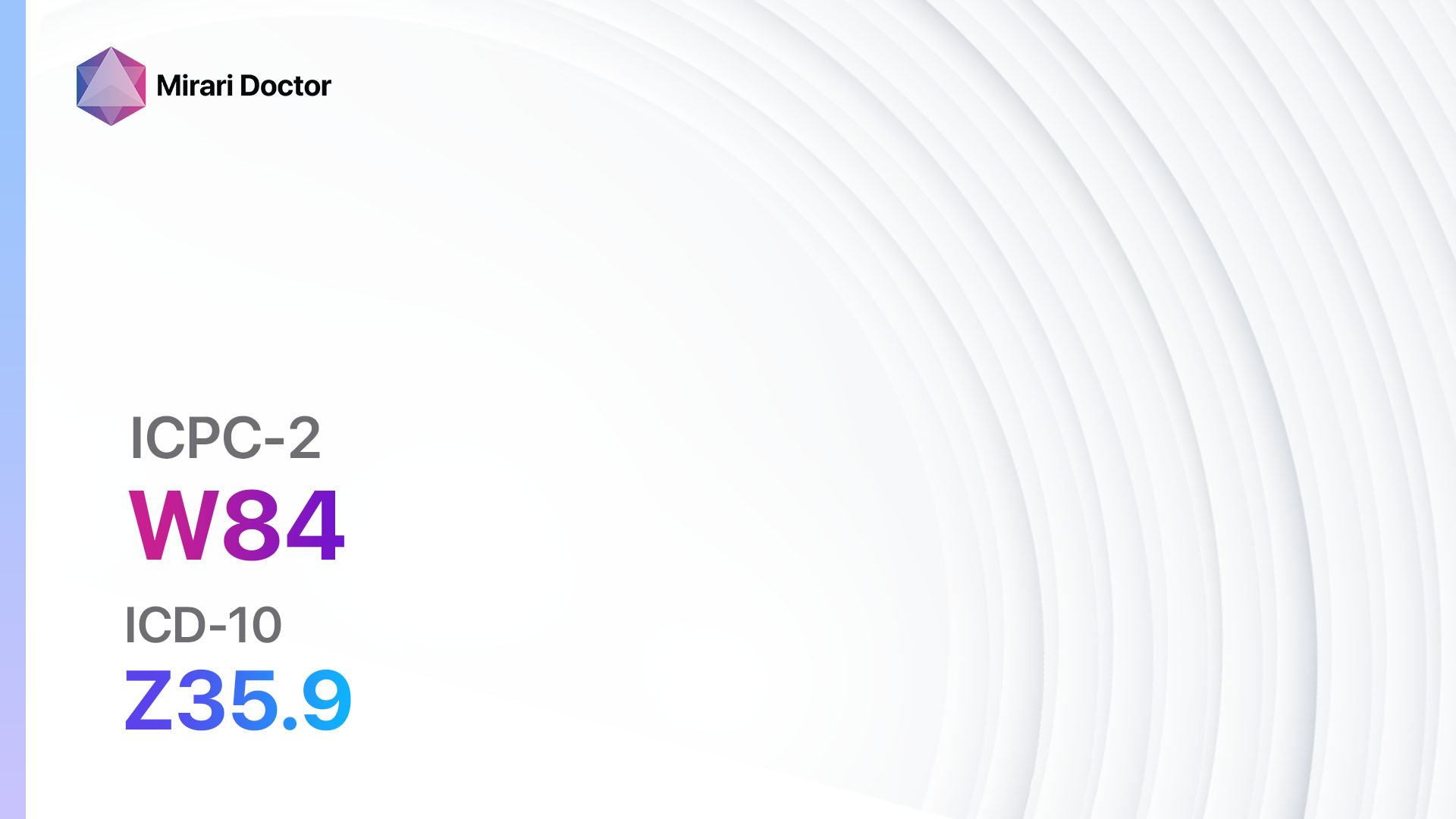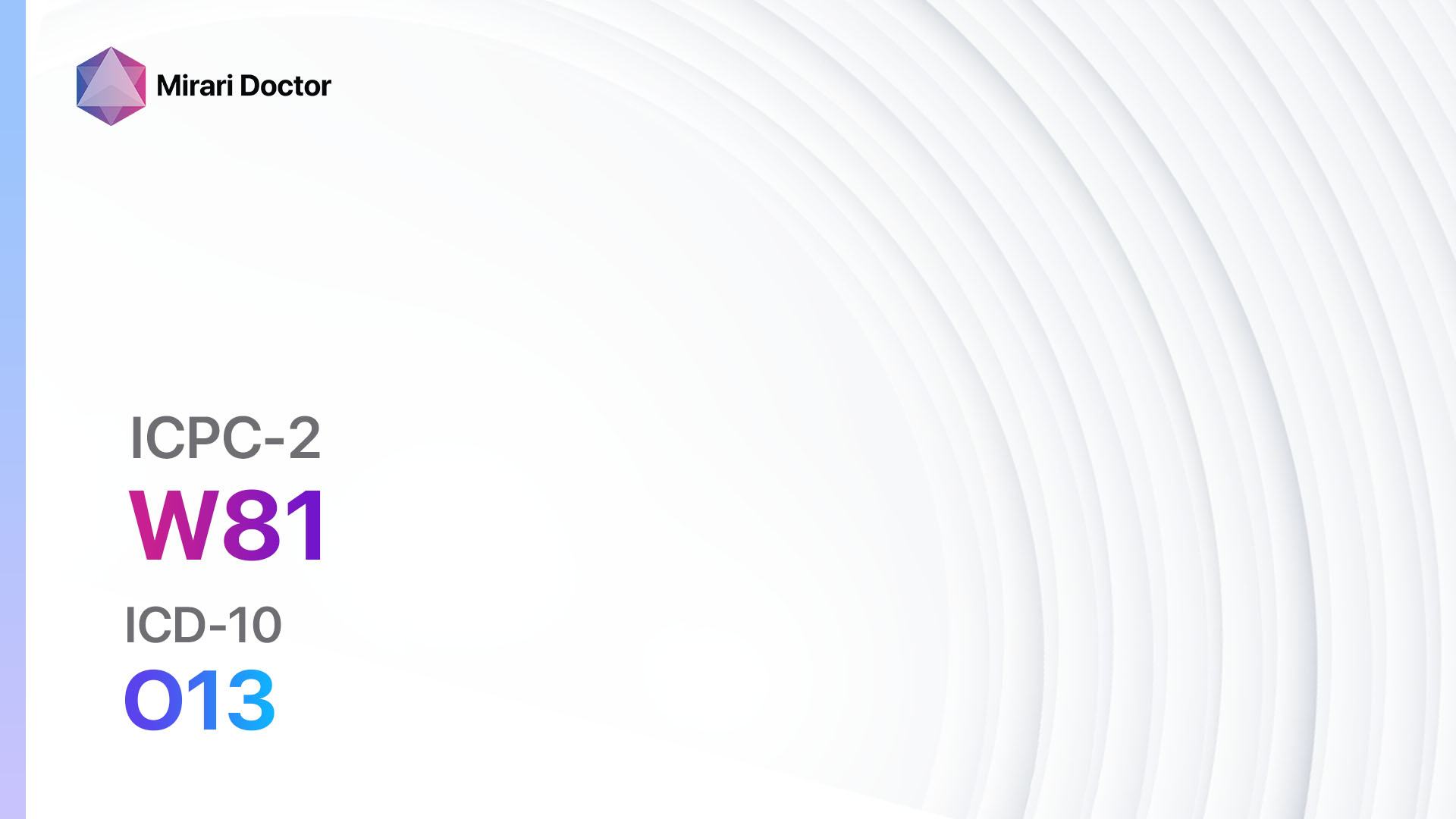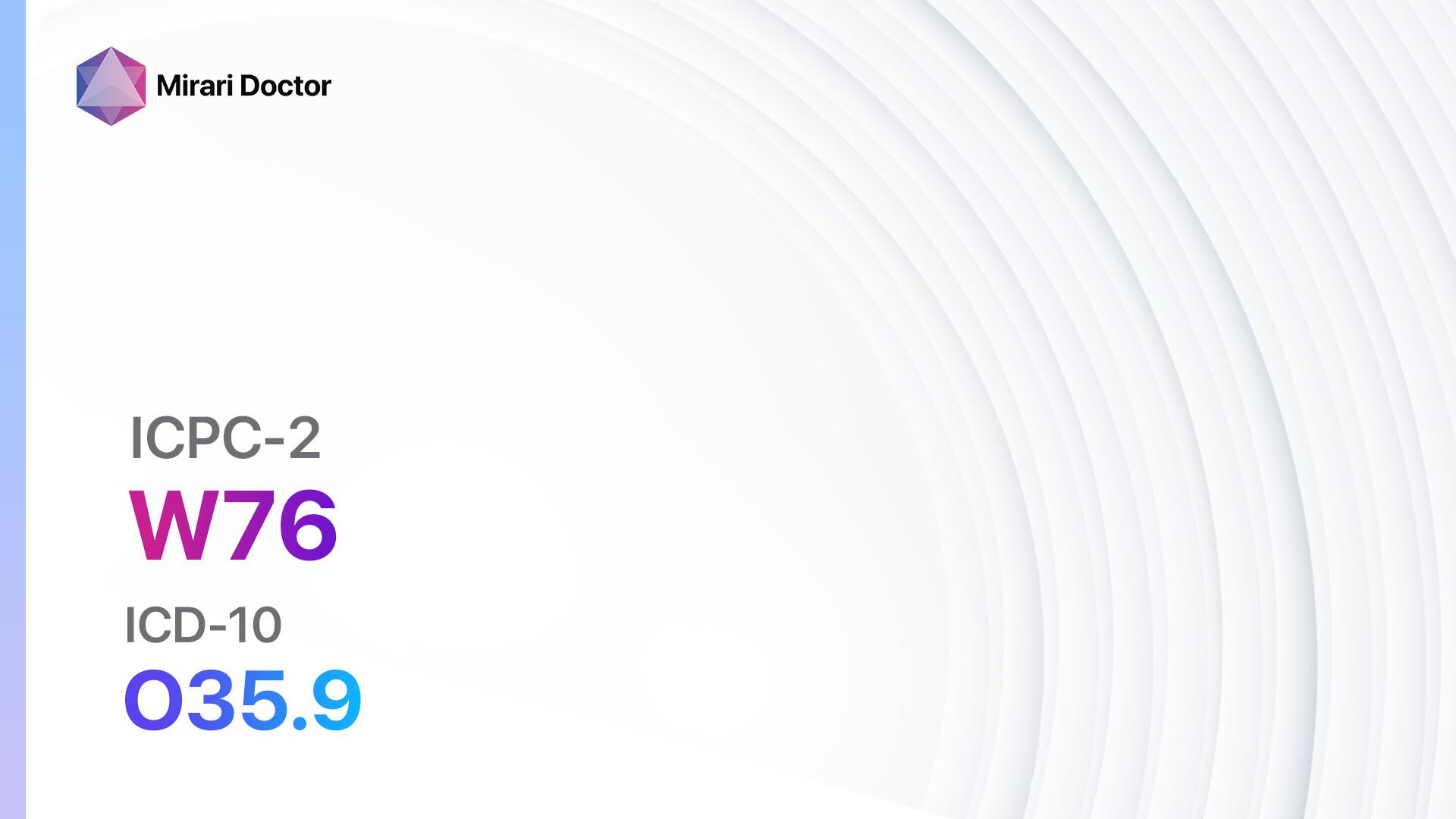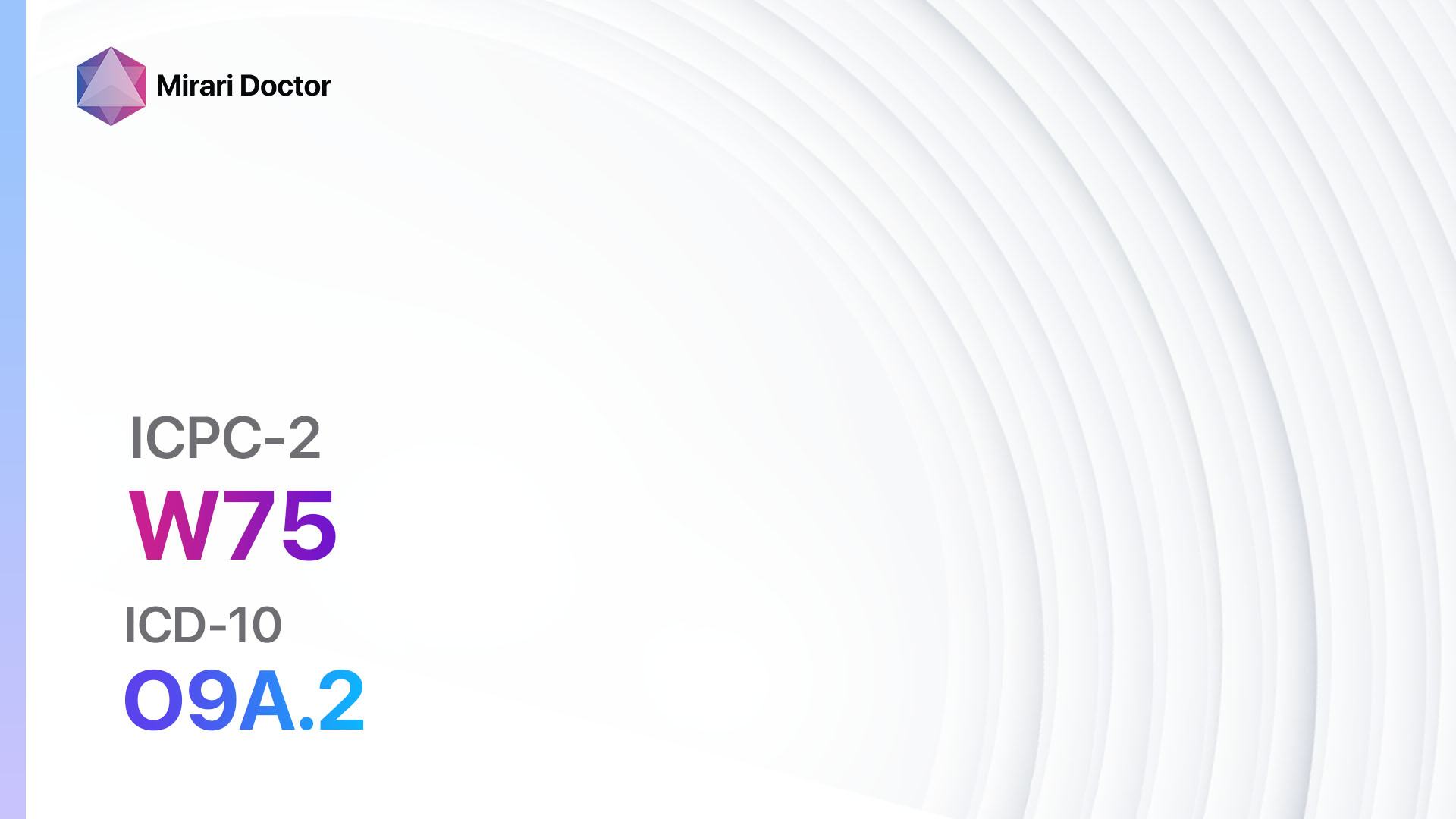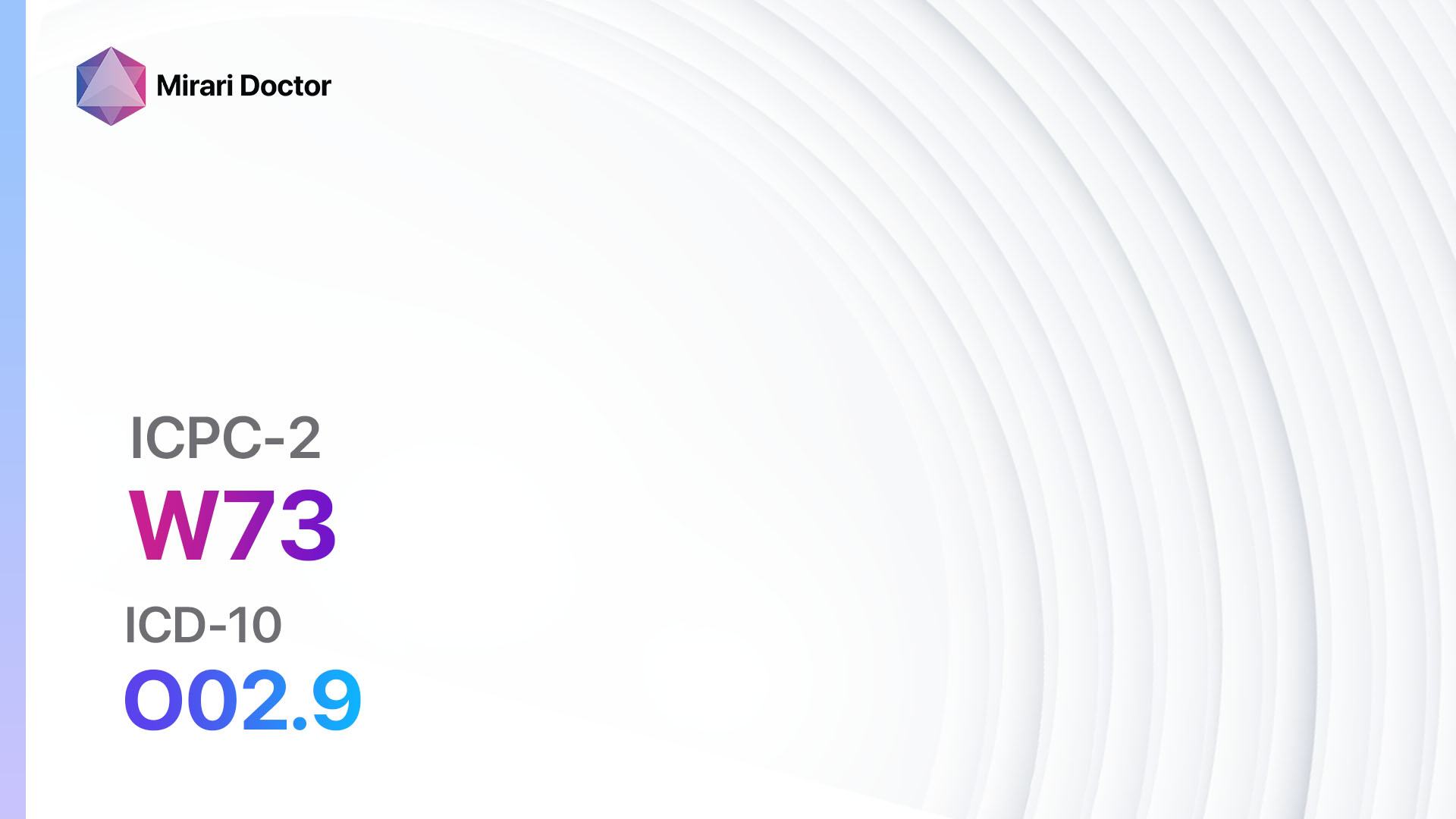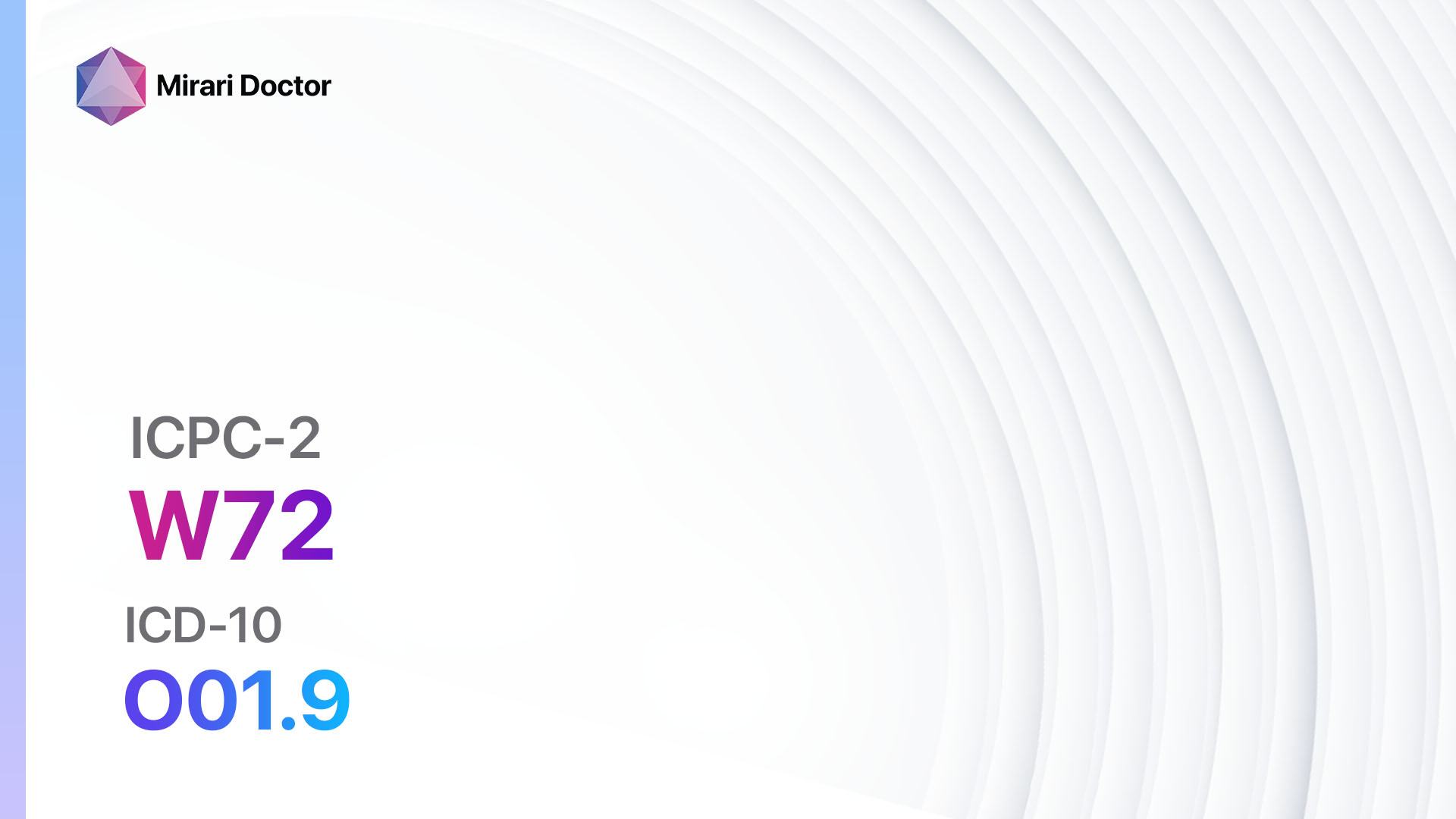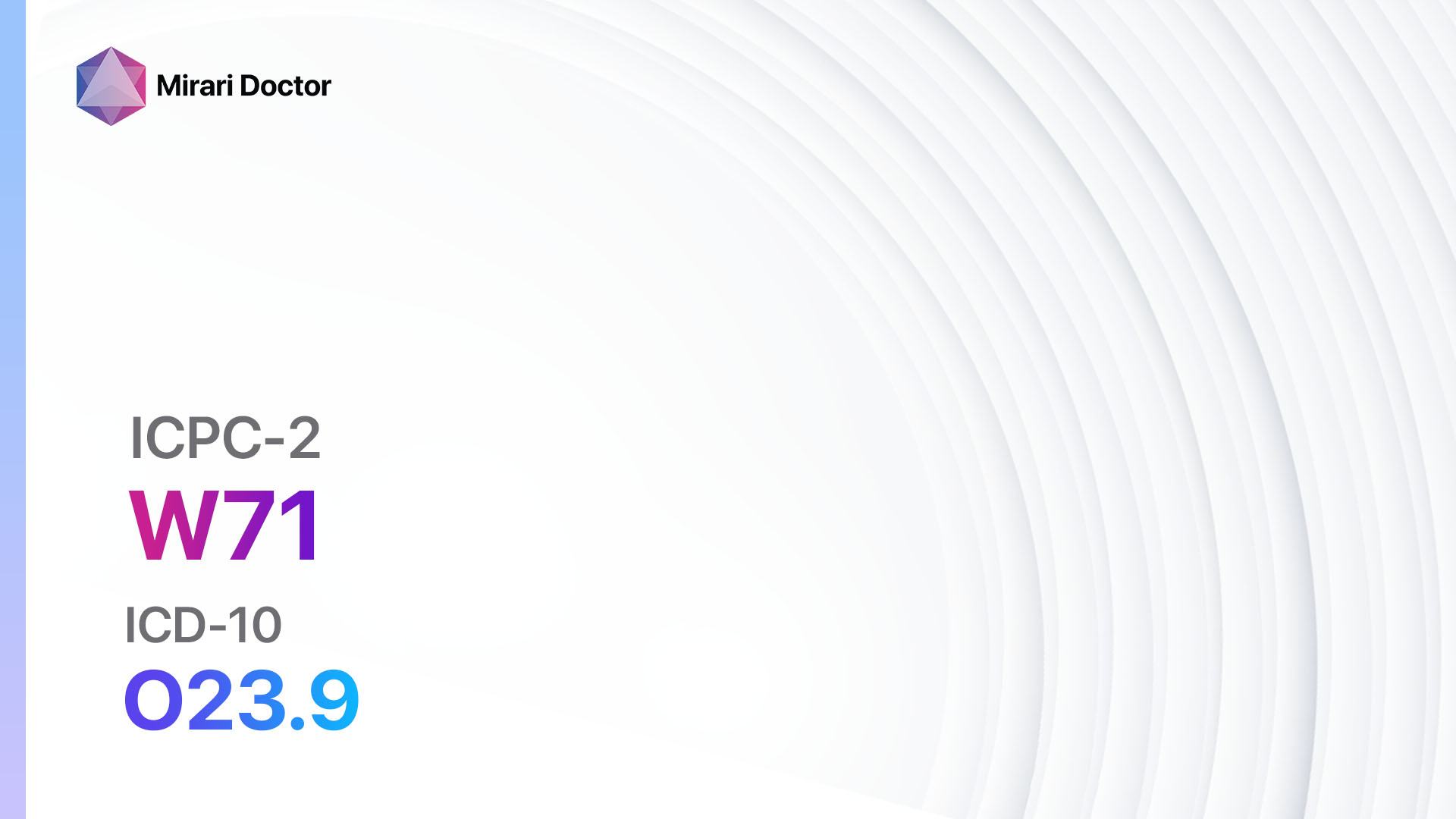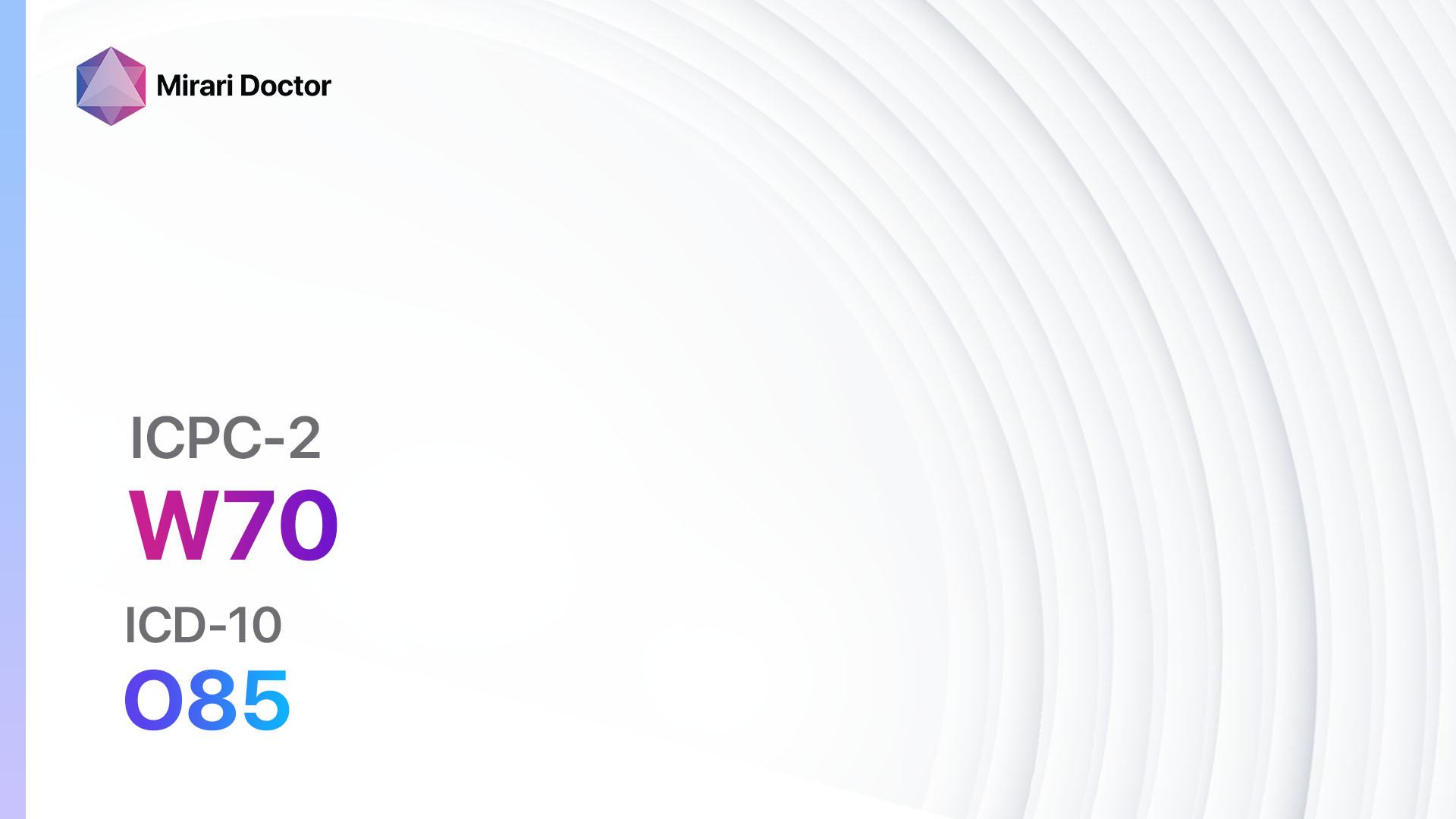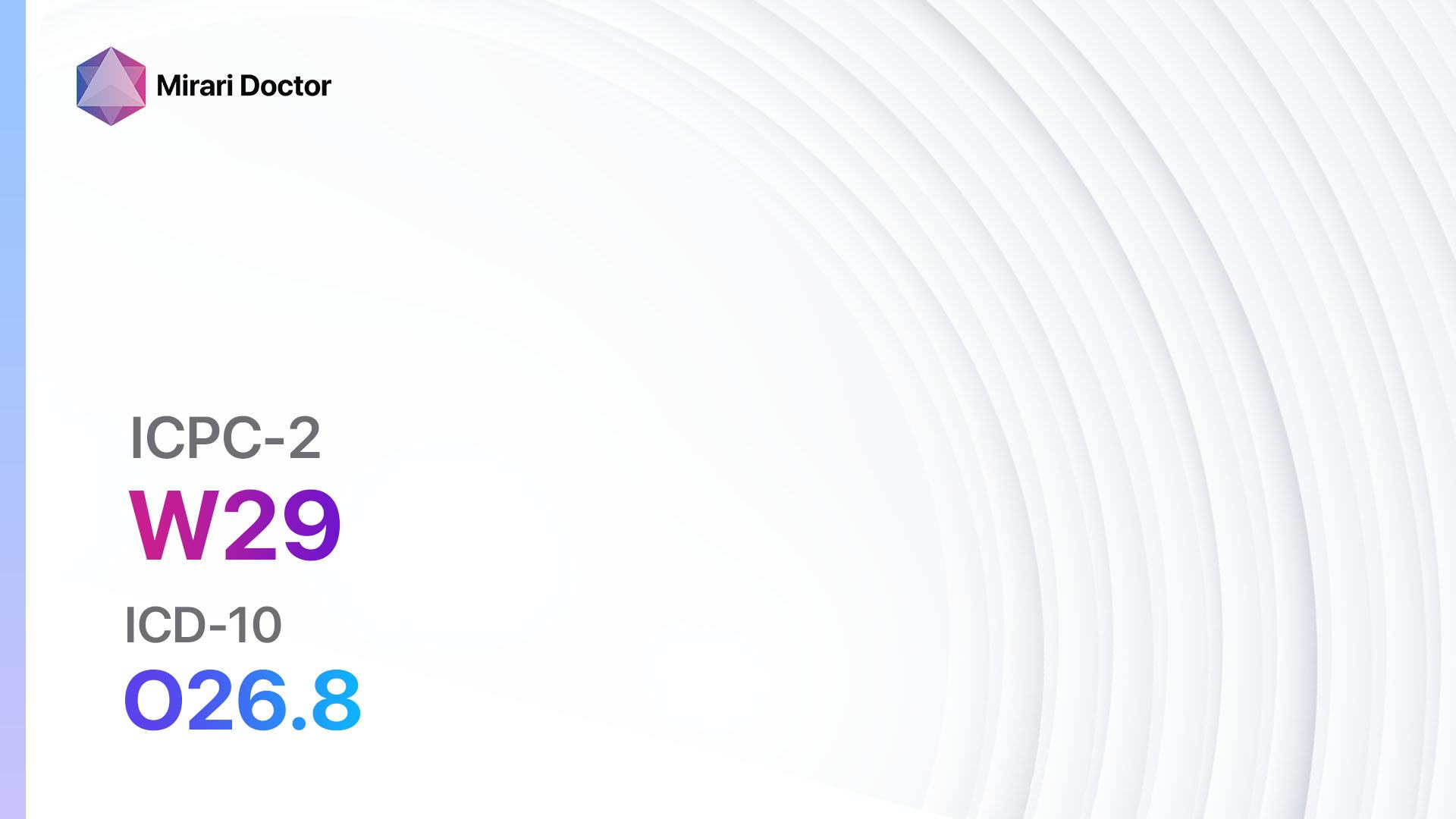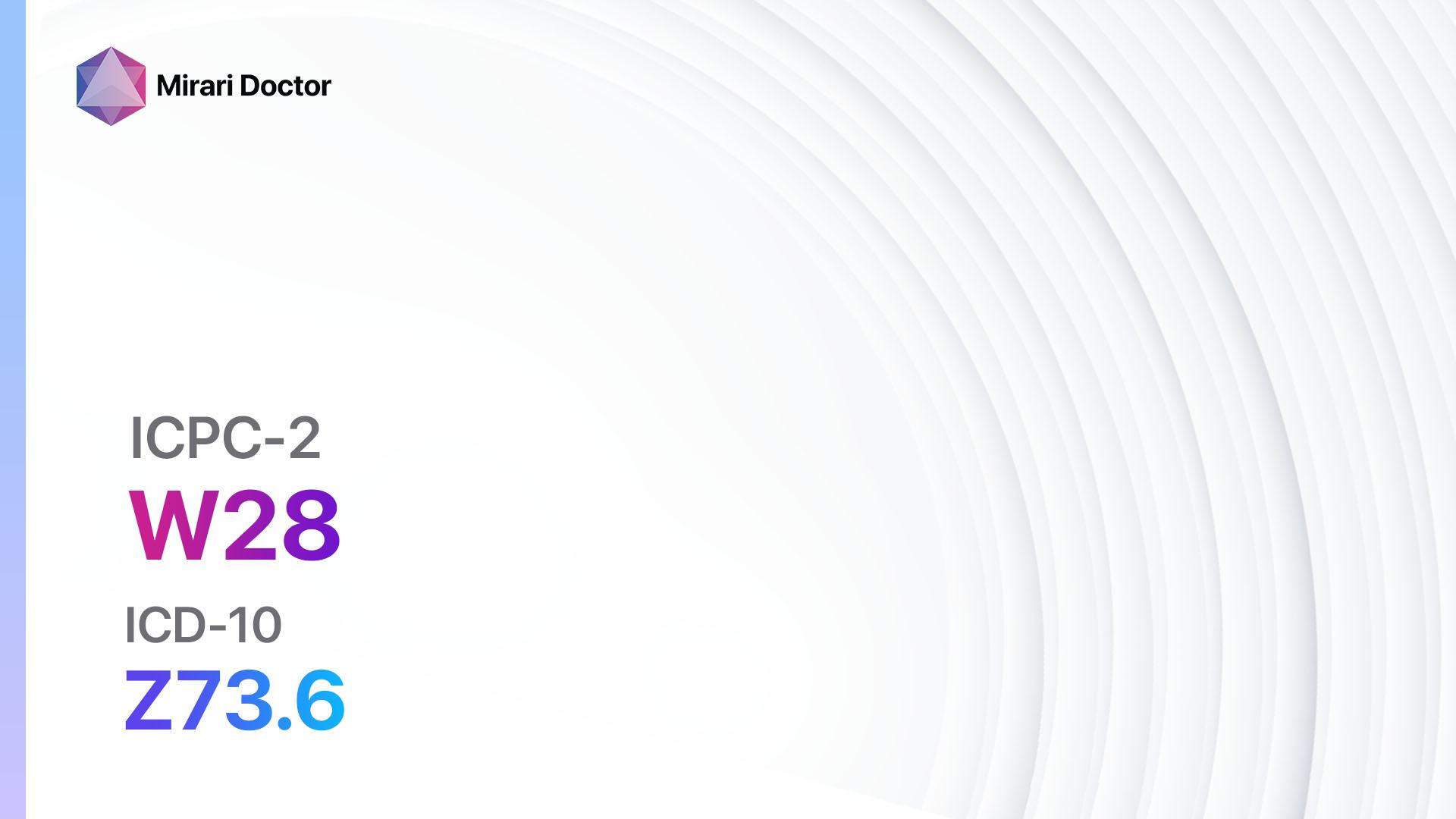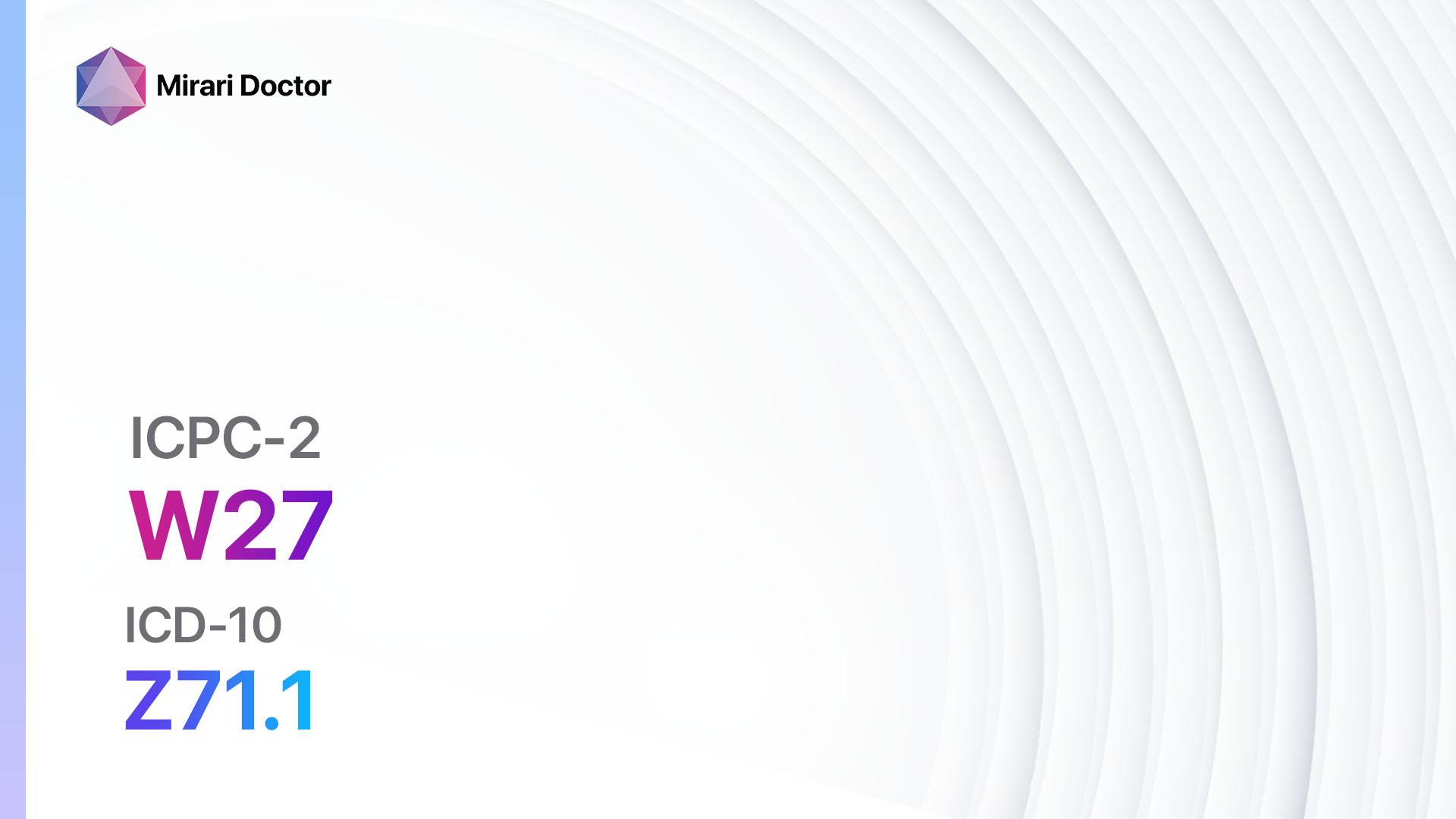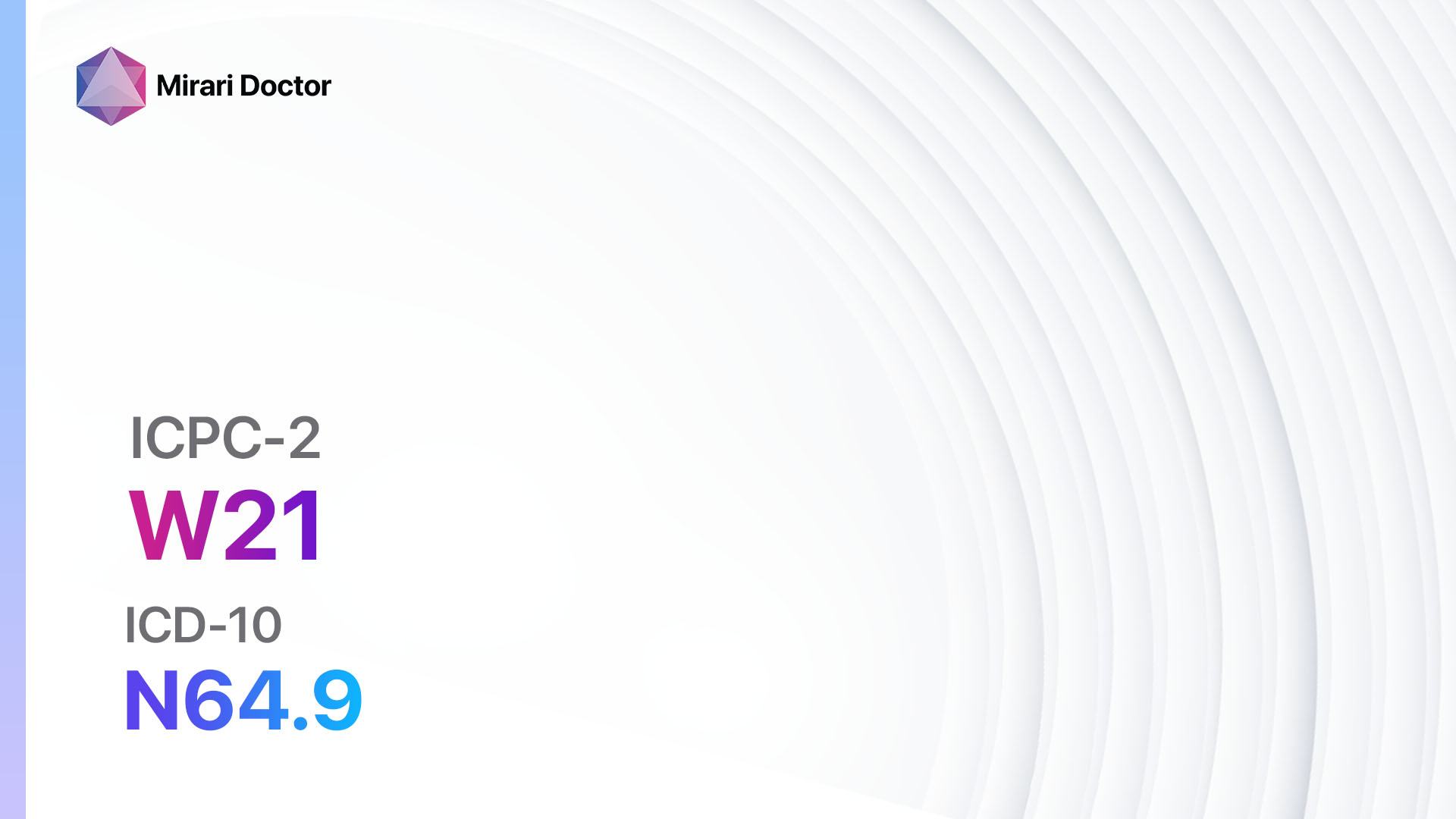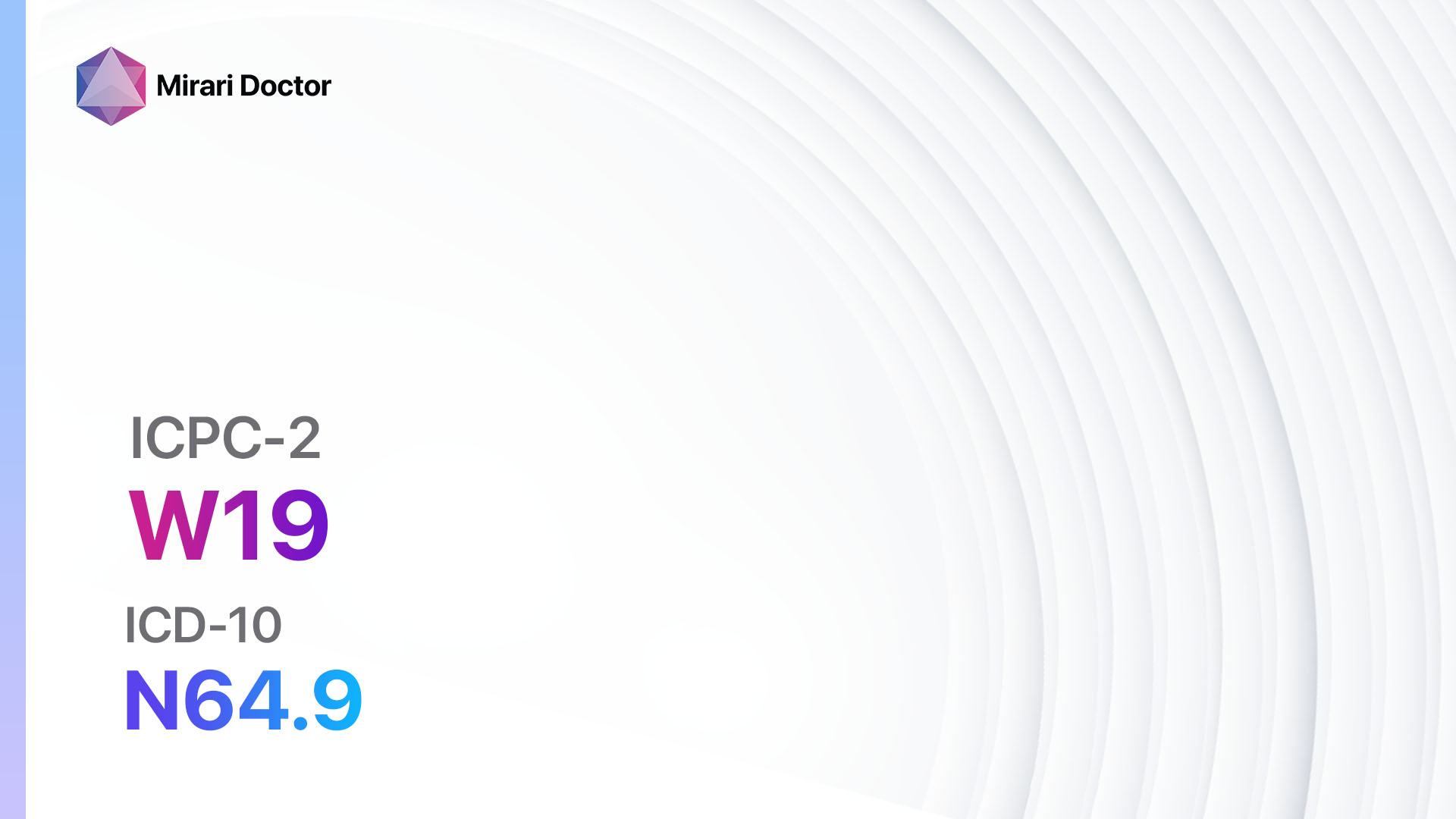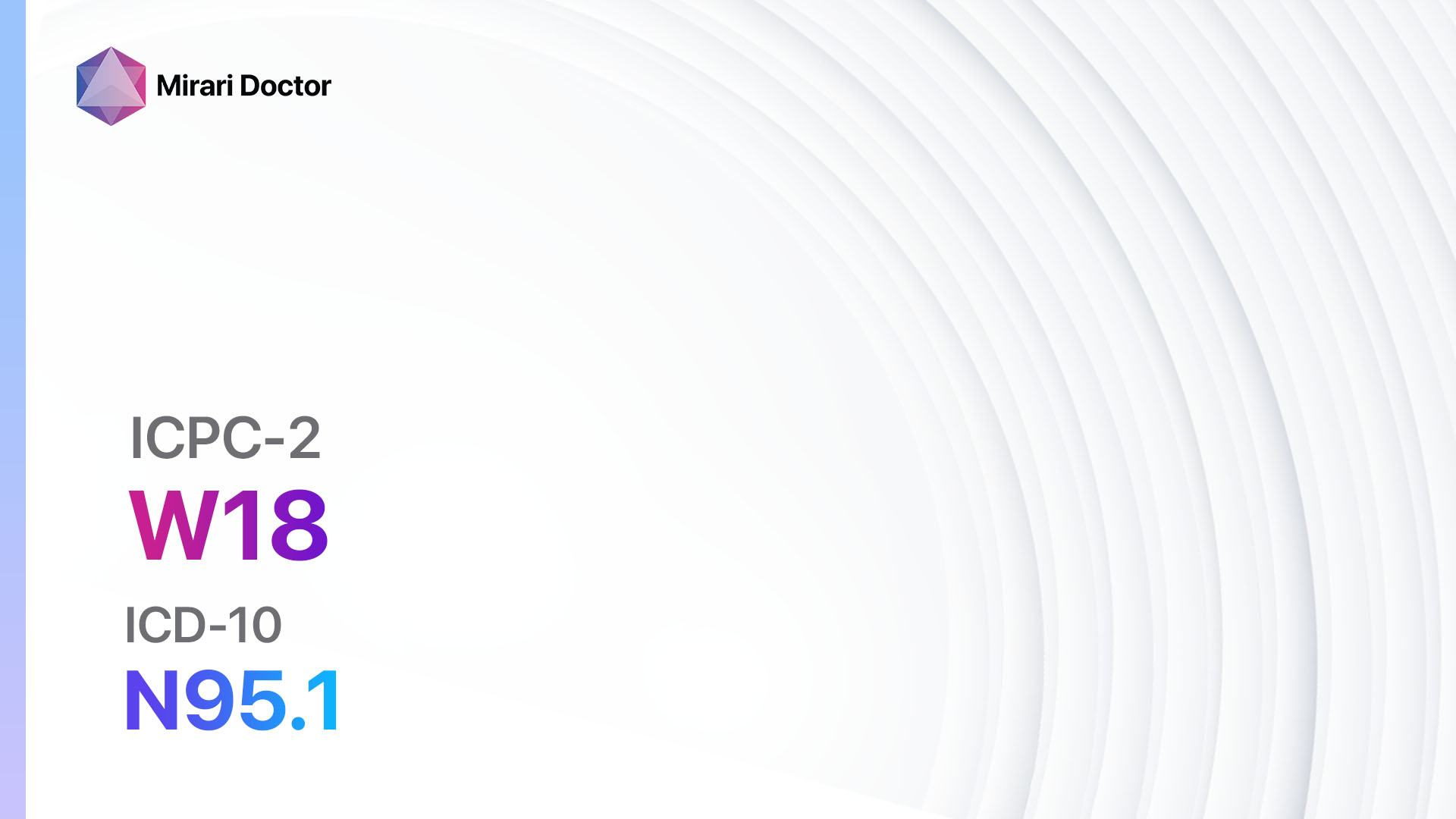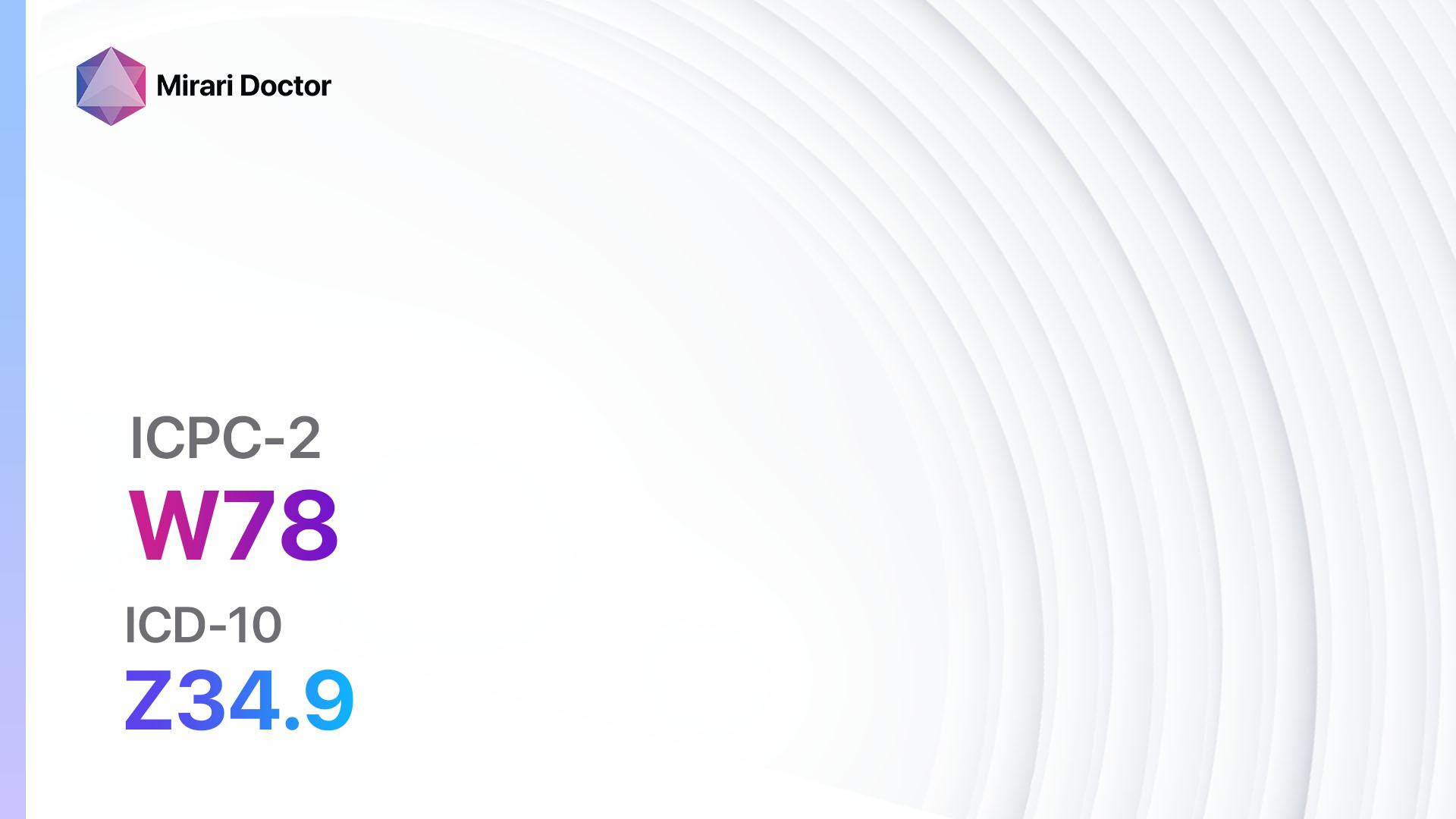
Introduction
Pregnancy is a natural physiological process in which a woman carries a developing fetus in her uterus. It is a significant event in a woman’s life and requires proper care and management to ensure a healthy pregnancy and delivery[1]. The aim of this guide is to provide healthcare professionals with a comprehensive understanding of pregnancy, including its symptoms, causes, diagnostic steps, possible interventions, and patient education.
Codes
Symptoms
- Missed period: The most common and early sign of pregnancy is a missed menstrual period[3].
- Nausea and vomiting: Many pregnant women experience morning sickness, which includes nausea and vomiting[4].
- Breast changes: Pregnant women may notice breast tenderness, enlargement, and darkening of the areolas[5].
- Fatigue: Feeling tired and exhausted is a common symptom of pregnancy[6].
- Frequent urination: Pregnant women may experience an increased need to urinate due to hormonal changes and pressure on the bladder[7].
- Food cravings and aversions: Pregnant women may develop specific cravings for certain foods or have aversions to others[8].
- Mood swings: Hormonal changes during pregnancy can lead to mood swings and emotional changes[9].
- Constipation: Hormonal changes can slow down the digestive system, leading to constipation[10].
- Increased vaginal discharge: Pregnant women may notice an increase in vaginal discharge, which is normal unless it is accompanied by itching, burning, or a foul odor.
- Swollen and tender breasts: Hormonal changes can cause breast swelling and tenderness.
Causes
- Fertilization: Pregnancy occurs when a sperm fertilizes an egg during sexual intercourse.
- Implantation: The fertilized egg implants itself into the lining of the uterus, where it grows and develops.
- Hormonal changes: Pregnancy is characterized by significant hormonal changes, including an increase in progesterone and estrogen levels.
- Placenta formation: The placenta, which provides nourishment and oxygen to the developing fetus, forms during pregnancy.
Diagnostic Steps
Medical History
- Gather information about the patient’s menstrual history, including the date of the last menstrual period (LMP).
- Ask about any previous pregnancies, including the number of pregnancies, deliveries, and miscarriages.
- Inquire about the patient’s sexual history and contraceptive use.
- Assess the patient’s medical history, including any pre-existing medical conditions or medications.
- Determine if the patient has any risk factors for complications during pregnancy, such as advanced maternal age or a history of gestational diabetes or preeclampsia.
Physical Examination
- Perform a general physical examination, including measuring the patient’s height, weight, and blood pressure.
- Conduct a pelvic examination to assess the size and position of the uterus.
- Palpate the abdomen to feel for the presence of a fetal heartbeat or fetal movements.
- Examine the breasts for any changes or abnormalities.
- Check for any signs of edema or swelling in the extremities, which may indicate preeclampsia.
Laboratory Tests
- Urine pregnancy test: A urine sample is tested for the presence of human chorionic gonadotropin (hCG), a hormone produced during pregnancy.
- Blood tests: Blood tests can measure hCG levels and assess the patient’s blood type, Rh factor, and hemoglobin levels.
- Complete blood count (CBC): A CBC can detect any abnormalities in the patient’s red and white blood cell counts.
- Blood glucose test: This test is used to screen for gestational diabetes.
- Rubella immunity test: This test determines if the patient is immune to rubella, a viral infection that can cause birth defects.
- Sexually transmitted infection (STI) screening: Pregnant women are often screened for STIs, including syphilis, HIV, and hepatitis B.
Diagnostic Imaging
- Ultrasound: Ultrasound imaging is used to confirm the pregnancy, determine the gestational age, and assess the health and development of the fetus.
- Doppler ultrasound: Doppler ultrasound can assess blood flow in the umbilical cord and other blood vessels.
- Magnetic resonance imaging (MRI): In certain cases, an MRI may be used to evaluate specific fetal abnormalities or maternal conditions.
Other Tests
- Genetic testing: Genetic testing may be recommended to assess the risk of certain genetic disorders or chromosomal abnormalities.
- Amniocentesis: This procedure involves taking a sample of amniotic fluid to test for genetic conditions or fetal lung maturity.
- Nonstress test: A nonstress test measures the fetal heart rate in response to fetal movement to assess fetal well-being.
- Biophysical profile: This test combines an ultrasound with a nonstress test to evaluate fetal well-being and assess amniotic fluid volume.
Follow-up and Patient Education
- Schedule regular prenatal visits to monitor the progress of the pregnancy and address any concerns or complications.
- Educate the patient about proper nutrition, exercise, and prenatal vitamins.
- Discuss the importance of prenatal care and attending all scheduled appointments.
- Provide information on common discomforts of pregnancy and strategies for managing them.
- Offer guidance on preparing for labor and delivery, including childbirth classes and creating a birth plan.
- Discuss the signs and symptoms of preterm labor and when to seek medical attention.
Possible Interventions
Traditional Interventions
Medications:
Top 5 drugs for Pregnancy:
- Prenatal vitamins:
- Cost: $10-$50 per month.
- Contraindications: Allergic reactions to any of the ingredients.
- Side effects: Nausea, constipation.
- Severe side effects: None reported.
- Drug interactions: None reported.
- Warning: Should be taken as prescribed by healthcare provider.
- Folic acid:
- Cost: $5-$10 per month.
- Contraindications: Allergic reactions to folic acid.
- Side effects: None reported.
- Severe side effects: None reported.
- Drug interactions: None reported.
- Warning: Should be taken before and during early pregnancy to prevent neural tube defects.
- Iron supplements:
- Cost: $5-$20 per month.
- Contraindications: Hemochromatosis, iron overload.
- Side effects: Constipation, nausea.
- Severe side effects: None reported.
- Drug interactions: Antacids, calcium supplements.
- Warning: Should be taken as prescribed by healthcare provider.
- Antiemetics (e.g., Ondansetron, Metoclopramide):
- Cost: $10-$50 per month.
- Contraindications: Hypersensitivity to the medication.
- Side effects: Headache, dizziness.
- Severe side effects: Irregular heart rhythm, muscle spasms.
- Drug interactions: Serotonin reuptake inhibitors (SSRIs), tramadol.
- Warning: Should be used under the guidance of a healthcare provider.
- Antacids (e.g., Calcium carbonate, Magnesium hydroxide):
- Cost: $5-$20 per month.
- Contraindications: Hypercalcemia, kidney stones.
- Side effects: Constipation, diarrhea.
- Severe side effects: None reported.
- Drug interactions: Antibiotics, iron supplements.
- Warning: Should be used as directed and not exceed recommended doses.
Alternative Drugs:
- Ginger: Can be used to alleviate nausea and vomiting during pregnancy. Cost: $5-$10 per month.
- Acetaminophen: Safe for pain relief during pregnancy. Cost: $5-$10 per month.
- Docusate sodium: A stool softener used to relieve constipation. Cost: $5-$10 per month.
- Diphenhydramine: Can be used for allergies or sleep aid. Cost: $5-$10 per month.
- Saline nasal spray: Can be used for nasal congestion. Cost: $5-$10 per month.
Surgical Procedures:
- Cesarean section: A surgical procedure in which the baby is delivered through an incision in the abdomen and uterus. Cost: $20,000-$50,000.
- Episiotomy: An incision made in the perineum to enlarge the vaginal opening during delivery. Cost: $5,000-$10,000.
Alternative Interventions
- Acupuncture: May help alleviate pregnancy-related symptoms such as nausea, back pain, and insomnia. Cost: $60-$120 per session.
- Chiropractic care: Can help with musculoskeletal discomfort during pregnancy. Cost: $50-$100 per session.
- Prenatal yoga: Can improve flexibility, strength, and relaxation during pregnancy. Cost: $10-$20 per class.
- Massage therapy: Can help relieve muscle tension and promote relaxation. Cost: $50-$100 per session.
- Hypnotherapy: May assist with pain management during labor and delivery. Cost: $100-$200 per session.
Lifestyle Interventions
- Healthy diet: Encourage a balanced diet rich in fruits, vegetables, whole grains, and lean proteins.
- Regular exercise: Recommend moderate exercise, such as walking or swimming, to maintain fitness and reduce pregnancy discomfort.
- Adequate hydration: Emphasize the importance of drinking enough water throughout the day.
- Stress management: Encourage stress-reducing activities such as meditation, deep breathing exercises, or prenatal yoga.
- Adequate sleep: Advise pregnant women to prioritize sleep and rest to support their overall well-being.
- Avoidance of harmful substances: Educate patients about the risks of smoking, alcohol consumption, and illicit drug use during pregnancy.
It is important to note that the cost ranges provided are approximate and may vary depending on the location and availability of the interventions. Healthcare professionals should consult local resources and guidelines for accurate and up-to-date information on costs and availability.
Mirari Cold Plasma Alternative Intervention
Understanding Mirari Cold Plasma
- Safe and Non-Invasive Treatment: Mirari Cold Plasma is a safe and non-invasive treatment option for various skin conditions. It does not require incisions, minimizing the risk of scarring, bleeding, or tissue damage.
- Efficient Extraction of Foreign Bodies: Mirari Cold Plasma facilitates the removal of foreign bodies from the skin by degrading and dissociating organic matter, allowing easier access and extraction.
- Pain Reduction and Comfort: Mirari Cold Plasma has a local analgesic effect, providing pain relief during the treatment, making it more comfortable for the patient.
- Reduced Risk of Infection: Mirari Cold Plasma has antimicrobial properties, effectively killing bacteria and reducing the risk of infection.
- Accelerated Healing and Minimal Scarring: Mirari Cold Plasma stimulates wound healing and tissue regeneration, reducing healing time and minimizing the formation of scars.
Mirari Cold Plasma Prescription
Video instructions for using Mirari Cold Plasma Device – W78 Pregnancy (ICD-10:Z34.9)
| Mild | Moderate | Severe |
| Mode setting: 2 (Wound Healing) Location: 2 (Prostate & Uterus) Morning: 15 minutes, Evening: 15 minutes |
Mode setting: 2 (Wound Healing) Location: 2 (Prostate & Uterus) Morning: 30 minutes, Lunch: 30 minutes, Evening: 30 minutes |
Mode setting: 2 (Wound Healing) Location: 2 (Prostate & Uterus) Morning: 30 minutes, Lunch: 30 minutes, Evening: 30 minutes |
| Mode setting: 7 (Immunotherapy) Location: 1 (Sacrum) Morning: 15 minutes, Evening: 15 minutes |
Mode setting: 7 (Immunotherapy) Location: 1 (Sacrum) Morning: 30 minutes, Lunch: 30 minutes, Evening: 30 minutes |
Mode setting: 7 (Immunotherapy) Location: 1 (Sacrum) Morning: 30 minutes, Lunch: 30 minutes, Evening: 30 minutes |
| Mode setting: 3 (Antiviral Therapy) Location: 0 (Localized) Morning: 15 minutes, Evening: 15 minutes |
Mode setting: 3 (Antiviral Therapy) Location: 0 (Localized) Morning: 30 minutes, Lunch: 30 minutes, Evening: 30 minutes |
Mode setting: 3 (Antiviral Therapy) Location: 0 (Localized) Morning: 30 minutes, Lunch: 30 minutes, Evening: 30 minutes |
| Total Morning: 45 minutes approx. $7.50 USD, Evening: 45 minutes approx. $7.50 USD |
Total Morning: 90 minutes approx. $15 USD, Lunch: 90 minutes approx. $15 USD, Evening: 90 minutes approx. $15 USD |
Total Morning: 90 minutes approx. $15 USD, Lunch: 90 minutes approx. $15 USD, Evening: 90 minutes approx. $15 USD |
| Usual treatment for 7-60 days approx. $105 USD – $900 USD | Usual treatment for 6-8 weeks approx. $1,890 USD – $2,520 USD |
Usual treatment for 3-6 months approx. $4,050 USD – $8,100 USD
|
 |
|
Use the Mirari Cold Plasma device to treat Pregnancy effectively.
WARNING: MIRARI COLD PLASMA IS DESIGNED FOR THE HUMAN BODY WITHOUT ANY ARTIFICIAL OR THIRD PARTY PRODUCTS. USE OF OTHER PRODUCTS IN COMBINATION WITH MIRARI COLD PLASMA MAY CAUSE UNPREDICTABLE EFFECTS, HARM OR INJURY. PLEASE CONSULT A MEDICAL PROFESSIONAL BEFORE COMBINING ANY OTHER PRODUCTS WITH USE OF MIRARI.
Step 1: Cleanse the Skin
- Start by cleaning the affected area of the skin with a gentle cleanser or mild soap and water. Gently pat the area dry with a clean towel.
Step 2: Prepare the Mirari Cold Plasma device
- Ensure that the Mirari Cold Plasma device is fully charged or has fresh batteries as per the manufacturer’s instructions. Make sure the device is clean and in good working condition.
- Switch on the Mirari device using the power button or by following the specific instructions provided with the device.
- Some Mirari devices may have adjustable settings for intensity or treatment duration. Follow the manufacturer’s instructions to select the appropriate settings based on your needs and the recommended guidelines.
Step 3: Apply the Device
- Place the Mirari device in direct contact with the affected area of the skin. Gently glide or hold the device over the skin surface, ensuring even coverage of the area experiencing.
- Slowly move the Mirari device in a circular motion or follow a specific pattern as indicated in the user manual. This helps ensure thorough treatment coverage.
Step 4: Monitor and Assess:
- Keep track of your progress and evaluate the effectiveness of the Mirari device in managing your Pregnancy. If you have any concerns or notice any adverse reactions, consult with your health care professional.
Note
This guide is for informational purposes only and should not replace the advice of a medical professional. Always consult with your healthcare provider or a qualified medical professional for personal advice, diagnosis, or treatment. Do not solely rely on the information presented here for decisions about your health. Use of this information is at your own risk. The authors of this guide, nor any associated entities or platforms, are not responsible for any potential adverse effects or outcomes based on the content.
Mirari Cold Plasma System Disclaimer
- Purpose: The Mirari Cold Plasma System is a Class 2 medical device designed for use by trained healthcare professionals. It is registered for use in Thailand and Vietnam. It is not intended for use outside of these locations.
- Informational Use: The content and information provided with the device are for educational and informational purposes only. They are not a substitute for professional medical advice or care.
- Variable Outcomes: While the device is approved for specific uses, individual outcomes can differ. We do not assert or guarantee specific medical outcomes.
- Consultation: Prior to utilizing the device or making decisions based on its content, it is essential to consult with a Certified Mirari Tele-Therapist and your medical healthcare provider regarding specific protocols.
- Liability: By using this device, users are acknowledging and accepting all potential risks. Neither the manufacturer nor the distributor will be held accountable for any adverse reactions, injuries, or damages stemming from its use.
- Geographical Availability: This device has received approval for designated purposes by the Thai and Vietnam FDA. As of now, outside of Thailand and Vietnam, the Mirari Cold Plasma System is not available for purchase or use.
References
- Cunningham, F. G., Leveno, K. J., Bloom, S. L., Spong, C. Y., Dashe, J. S., Hoffman, B. L., … & Sheffield, J. S. (2018). Williams obstetrics (25th ed.). McGraw-Hill Education.
- World Health Organization. (2019). International statistical classification of diseases and related health problems (11th ed.).
- American College of Obstetricians and Gynecologists. (2021). Pregnancy. Retrieved from https://www.acog.org/womens-health/faqs/pregnancy
- Lacroix, R., Eason, E., & Melzack, R. (2000). Nausea and vomiting during pregnancy: A prospective study of its frequency, intensity, and patterns of change. American Journal of Obstetrics and Gynecology, 182(4), 931-937.
- Geddes, L. (2007). Breast changes in pregnancy. The Practising Midwife, 10(3), 23-26.
- Chou, F. H., Lin, L. L., Cooney, A. T., Walker, L. O., & Riggs, M. W. (2003). Psychosocial factors related to nausea, vomiting, and fatigue in early pregnancy. Journal of Nursing Scholarship, 35(2), 119-125.
- Vazquez, J. C. (2013). Constipation, haemorrhoids, and heartburn in pregnancy. BMJ Clinical Evidence, 2013, 1411.
- Orloff, N. C., & Hormes, J. M. (2014). Pickles and ice cream! Food cravings in pregnancy: hypotheses, preliminary evidence, and directions for future research. Frontiers in Psychology, 5, 1076.
- Bennett, H. A., Einarson, A., Taddio, A., Koren, G., & Einarson, T. R. (2004). Prevalence of depression during pregnancy: systematic review. Obstetrics & Gynecology, 103(4), 698-709.
- Trottier, M., Erebara, A., & Bozzo, P. (2012). Treating constipation during pregnancy. Canadian Family Physician, 58(8), 836-838.
Related articles
Made in USA


